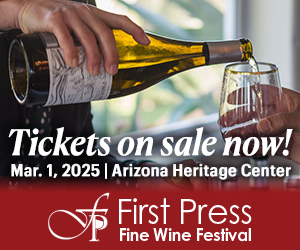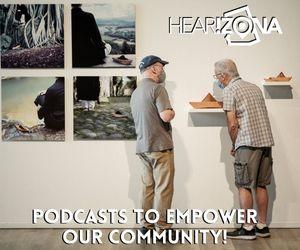
The Valley’s own Frank Darimento explores the best of both worlds, as he leads La Forza Chamber Orchesta and a jazz Quintet in a concert, Jazz at the Symphony, 7:30pm, Friday, May 17, at the Valley Presbyterian Church in Paradise Valley. K-Bach’s Janine Miller spoke with Frank about the concert.
1. This week's concert with La Forza Chamber Orchestra sounds like a fusion between classical music and jazz. Were you thinking of specific concerts, like the 1923 Paul Whiteman concert in the which marked the premiere of Gershwin's "Rhapsody in Blue"...or do you simply love both classical music and jazz?
Attempts to link jazz with classical music have been around almost as long as jazz has, from the earliest 20th century. At the same time, improvisation has a long history in classical music. J.S. Bach, Handel, Mozart, Beethoven, Chopin, Liszt, and many other famous composers and classical musicians were known especially for their improvisational skills.
However, the efforts to fuse jazz and classical music gathered momentum in the 1960’s after composer Gunther Schuller coined the term “third stream” in 1957 to define a new genre of music located about halfway between jazz and classical music. He composed several pieces for the Modern Jazz Quartet in this manner. Similarly, classically trained jazz flutist, Hubert Laws recorded jazz versions of music by Bach, Mozart and Beethoven for small ensembles. The key to all these Third Stream pieces was the use of jazz improvisation.
I composed the first version of my “Concerto for Jazz Quintet and Orchestra” in college back in the ‘60s when Third Stream music was emerging. I played with a jazz quintet at Union College, in Schenectady, New York, where I also studied music composition. By the time I was a senior it seemed like a natural project to work on a Third Stream piece. The version of the piece we will perform at this concert is the third revision. However, it’s still essentially the same piece. The other consideration is that I’m bringing in my co-leader of that Union College jazz quintet, Dr. Dick Poccia, from Amherst, Massachusetts, to perform on this concert. So I thought it would be fun to do the latest version of the piece with another of the original players from the 1967 premier.
2. What do you hope to accomplish by mixing the two types of music? Are you hopeful that lovers of jazz music might gain more of an appreciation for classical music and vice-versa?
My objective for presenting the two jazz pieces with the orchestra is much like performing a Beethoven concerto. We will feature the jazz quintet in an orchestral setting. In order to take advantage of the music the jazz group plays, the pieces need to have jazz and improvisational elements. As I mentioned earlier, I’m not the first person to try this. However, since I’ve been playing jazz professionally from age 15 and have been composing classical music since my college days, it seemed like a reasonable idea. Of course, the fact that jazz fans might and get more exposure to classical music and classical listeners will get to hear jazz is a nice plus.
3. As a trombone player, jazz seems a pretty natural fit, since the trombone is frequently featured in jazz bands. But what about instruments which are pretty solidly "classical", like the oboes and bassoons? Was it difficult for them to let go of their classical training and to improvise and "jam"?
I was very adamant about not asking the orchestra to do any improvising, or even swing rhythms. These days many orchestras get to play swing rhythms in some pops music. But a large orchestra is never going to swing like a jazz band. Even if all the players could do it, there are just too many players to make it work. So I left the jazz improvisation to the jazz group.
The pieces blend jazz and classical elements through the themes and harmonies used. For example, in the “Concerto” both the orchestra and quintet play the same melody. However, the quintet plays a swing version and the orchestra plays it “straight.”
4. Your new piece, "Brandenburg Brew" sounds like a lot of fun. Tell us how you got the idea to write it.
I took a page out of Hubert Laws book in composing “Brandenburg Brew.” Laws recorded two CDs, “Afro-Classic” and “The Rite of Spring” in the 1960s. Don Sebesky was the arranger on both recordings. Sebesky took pieces by J.S. Bach, Mozart and Beethoven and rewrote them for small, 6 to 8 players. To varying degrees, the original versions were played almost note for note, but in each piece the group eventually digresses for a journey into jazz.
Since I was having trouble finding a second jazz piece for this concert I decided to write a new piece in this manner. I selected J.S. Bach’s “Brandenburg Concerto No. 1.” It actually has a jazz-like feel when you listen to the original and it features two solo instruments—in Bach’s version they are horns. In my version I replaced the two horns with the baritone sax and trombone. Then I borrowed Sebesky’s approach and built in some improvisational sections.
5. Can you share any news on La Forza Chamber Orchestra's 2013-2014 season?
We’re planning an exciting concert for next fall (2013). Pianist, Noel Engebretson from the University of Alabama, will be joining us to perform Mozart’s “Piano Concerto No. 20 in D minor.”
Admission is free for Friday's concert, please visit www.laforzachamberorchestra.org for more details.










